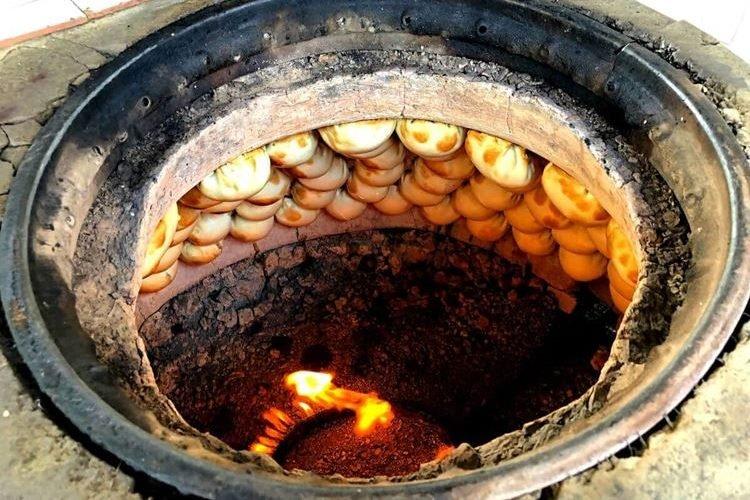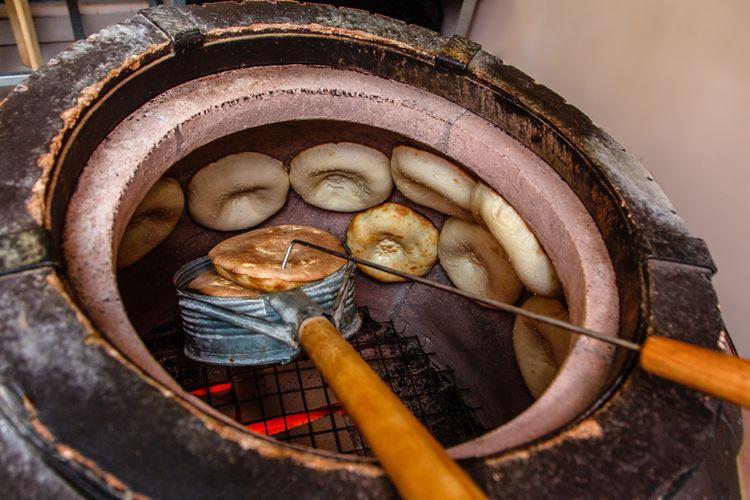
Tandoor is a real find brought to us by the peoples of Asia. At its core, it is an oven that resembles a bowl or jug for preparing food. Today we will tell you how the tandoor differs from the usual barbecue and how to make it yourself!
Types of tandoors
Tandoors differ from a conventional oven in a special configuration, so you can forget about not fried meat and vegetables. They also prepare fragrant oriental cakes - right on the walls. Outwardly, a classic tandoor resembles an earthen jug, in which firewood is stacked, and then skewers are hung.
Uzbek tandoor
To create Uzbek tandoors, sand and camel wool were added to fireclay clay. A volumetric dome with a wall thickness of about 5 cm was molded from it, dried for 3 weeks and used as a pommel for a hearth. It is very difficult to make such a blank without experience, but now even ready-made forms are being sold.
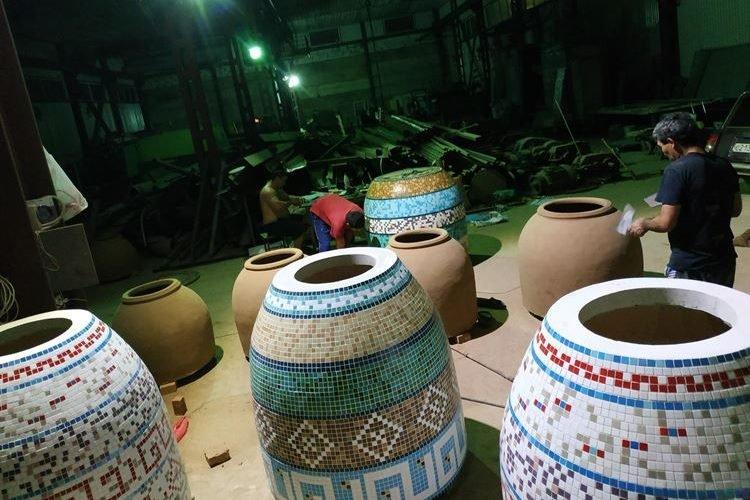
Armenian tandoor
Tandoor in Armenia is called "tonir" and it is also used for heating houses. Armenian tandoors were made of fireclay bricks, because the local clay is not so malleable and durable. In fact, it is a brick cylinder with clay joints and a coated inner surface.
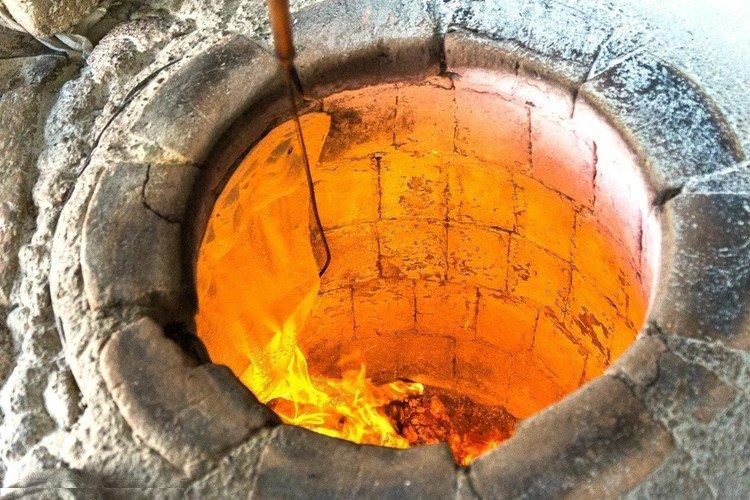
Earthen tandoor
An earthen tandoor is made in a pit about 1-1.25 m deep with an air duct hole. The walls and the bottom are lined with fireclay bricks and clay mortar. Or you can immerse a ready-made clay blank into the pit and tamp it well. Such stoves retain heat best of all, but they can not be dug in far from every soil.
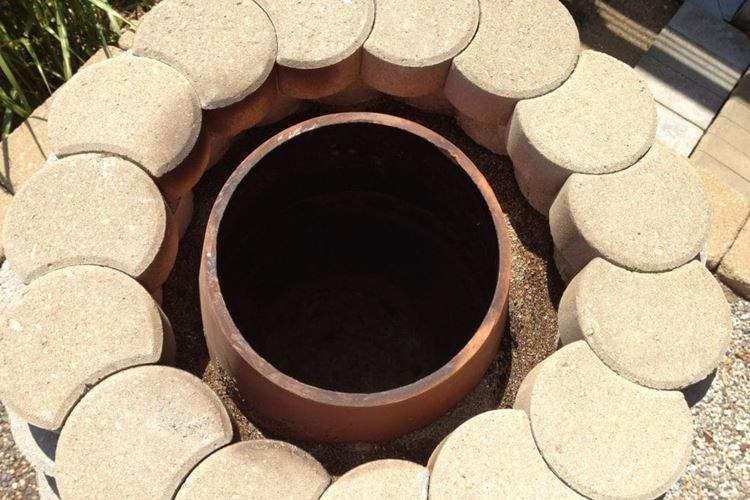
Land tandoor
As the name implies, the ground tandoor is completely above the ground and looks more like a classic Russian stove. The firewood is put into the brazier, and the draft is provided by the hole at the bottom. The fuel is loaded from the top or from the side, and when it is completely burnt out, the products can be lowered.
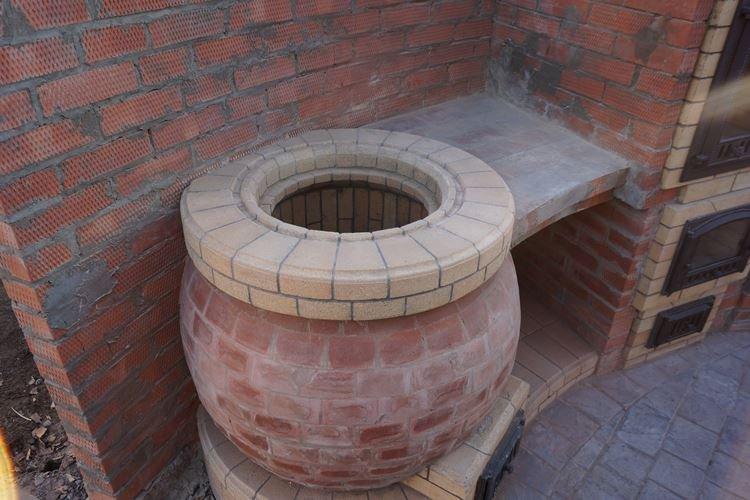
Mobile tandoor
Compact portable tandoors are great for giving and you can take them with you. They are made in the form of a keg or jug made of strong refractory clay with a lid and handles. Large models can be reinforced with steel strips.
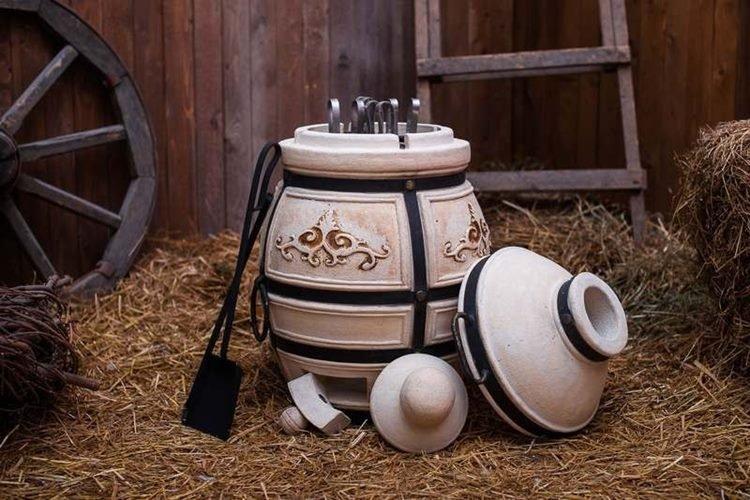
Wood burning tandoor
This is a classic tandoor that uses wood or coal. At the bottom there is always an opening for air flow and ash removal, so that you can tightly close the lid during cooking. Only deciduous wood is used because of the specific resins in the needles.
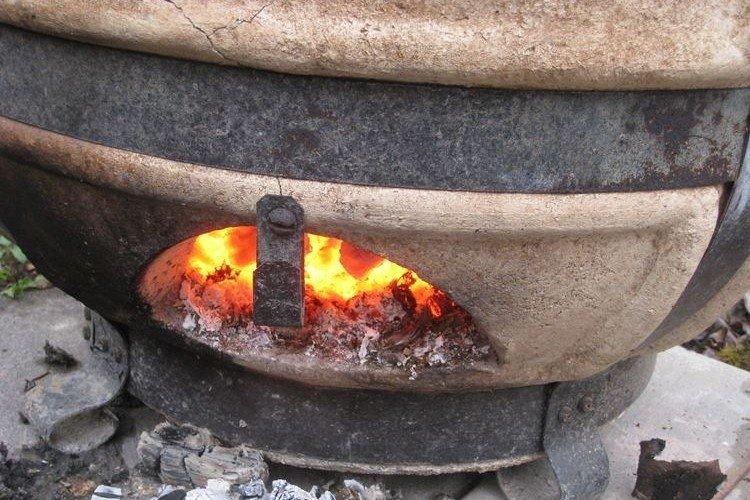
Gas tandoor
This is a modern tandoor variation for professional kitchens and bakeries. Inside is the same clay pot, but the main body is steel. Instead of firewood, gas is used, so using such a tandoor is no more difficult than using a home stove.
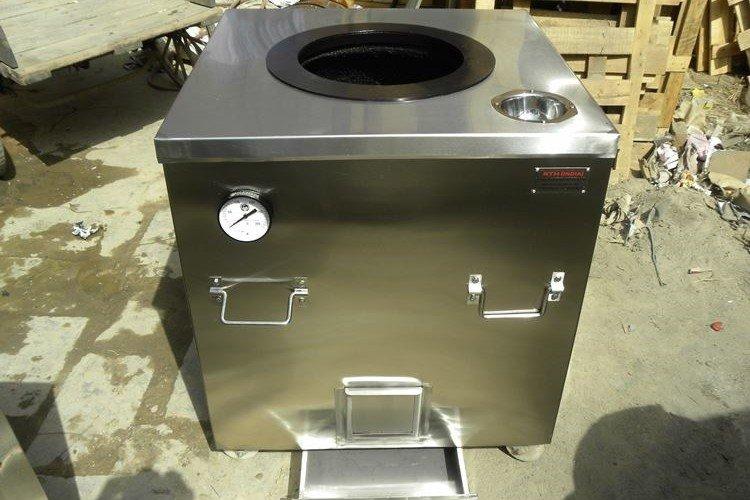
Electric tandoor
Another modern variation, in which heating elements are placed on the bottom instead of fuel - tubular electric heaters. They do not burn or smoke, so the device can be used even indoors. But keep in mind that the taste of the cooked food will not be the same as on the wood.
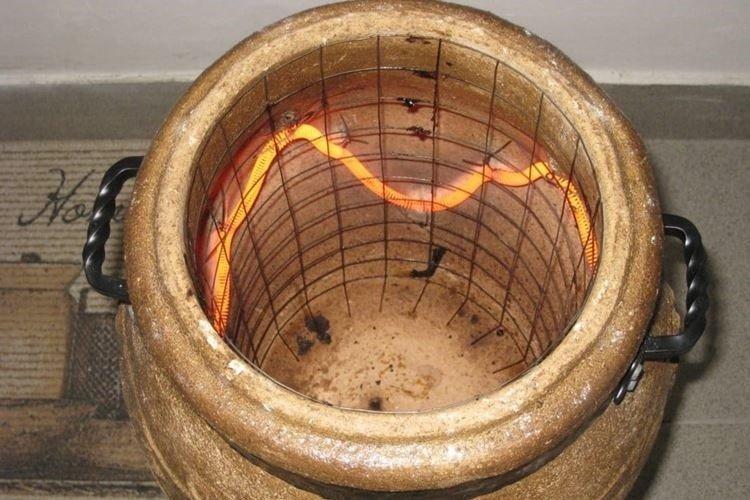
Dimensions of the tandoor
To decide what size tandoor you need, consider how many products you cook in it. For one or two fairly simple mobile stoves, but for company trips or family gatherings, a larger option is needed. Tandoors can be conditionally divided into small ones up to 40 kg, medium - up to 80 kg, large - up to 100 kg and very large - heavier than 100 kg.
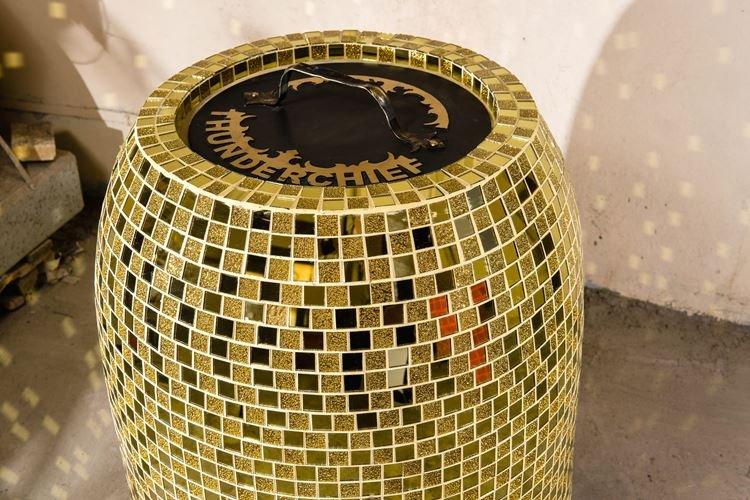
DIY brick tandoor
Most often, modern tandoors are made of brick, because it has optimal fire resistance and thermal insulation properties. In addition to it, you will need cement, sand and gravel mixture and ready-made refractory masonry mixture. And also - mesh, asbestos fiber, paint, fittings and wire.
Foundation preparation
Brick tandoor is quite heavy, so a solid foundation is definitely needed.On heavy soil, a simple columnar one is enough, and on light sandy soil you need a monolithic concrete slab. The optimal size is about a meter per meter with a slab thickness of 10 cm, but first, remove the soil layer 15 cm deep and make indentations in the corners for verticals.
For reinforcement, use fiberglass reinforcement, and fill the bottom of the pit with sand. Formwork is most conveniently done from roofing boards and reinforcing mesh. For pouring, use a concrete mixture with the consistency of thick sour cream: this is sand and gravel in a ratio of 3: 1 and cement grade 400 and higher.
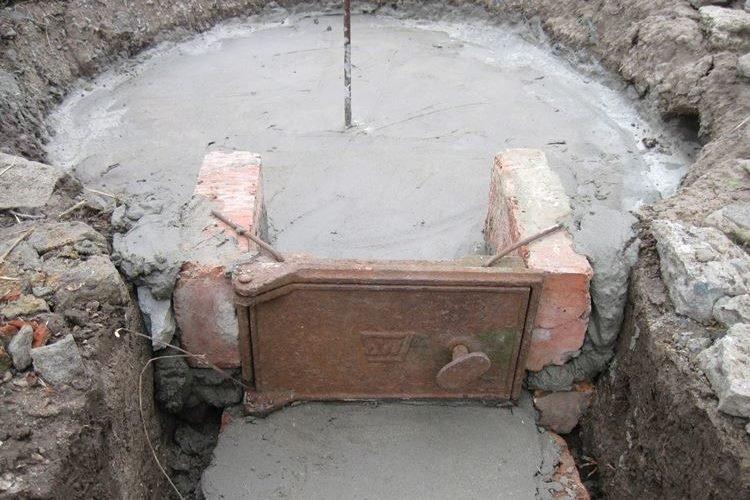
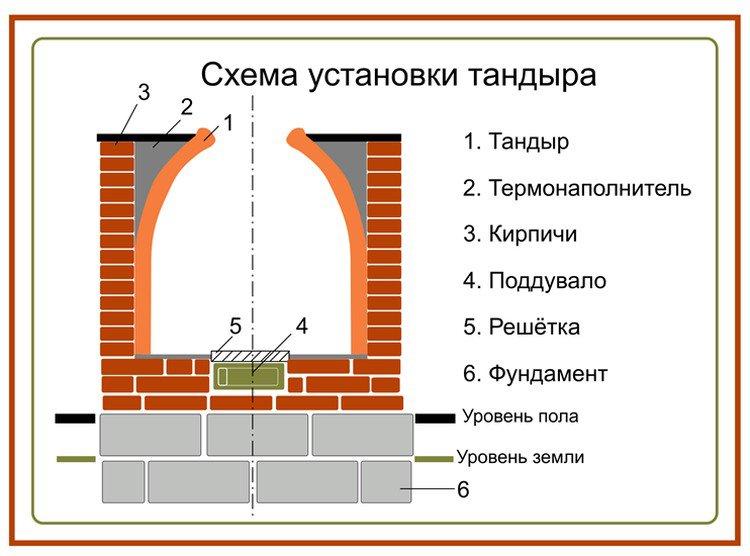
Laying the base
Lay out the base of the tandoor from the same fireclay brick from which you will make the walls. Keep in mind that regular red is not suitable for this purpose, because it will not survive such temperatures. Fireclay has higher fire resistance and frost resistance, and it is also denser and better withstands the pressure of the structure.
Before laying the brick base, the concrete foundation was covered with waterproofing roofing material. Use a special oven mixture for masonry. To make the tandoor round, use a regular cut-off wheel for cutting.
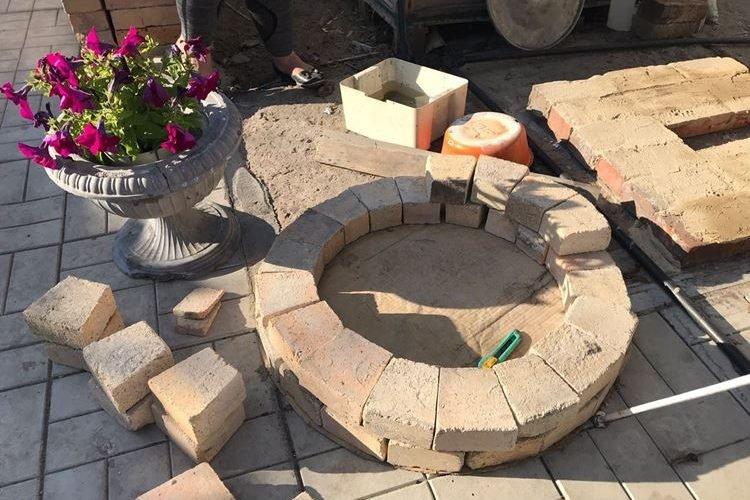
Tandoor body
The body of the tandoor is called the "rule" and by the standard its height is equal to the width of the base. The throat diameter is one third of the diameter of the bottom liner. For convenience, use a wooden pole and guides in 25 cm increments.
Lay the bricks vertically and do not regret the mortar for better adhesion. Each row must be tightened with wire like the rings on the barrel. Connect the inner edges as tightly as possible, and fill the distance between the outer ones with mortar.
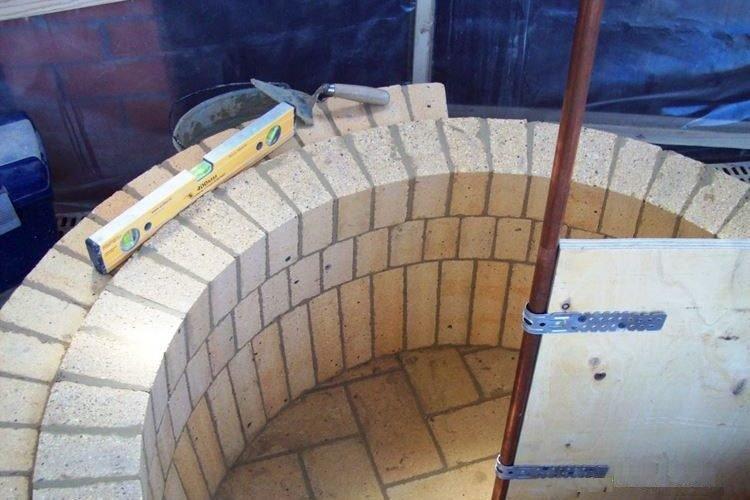
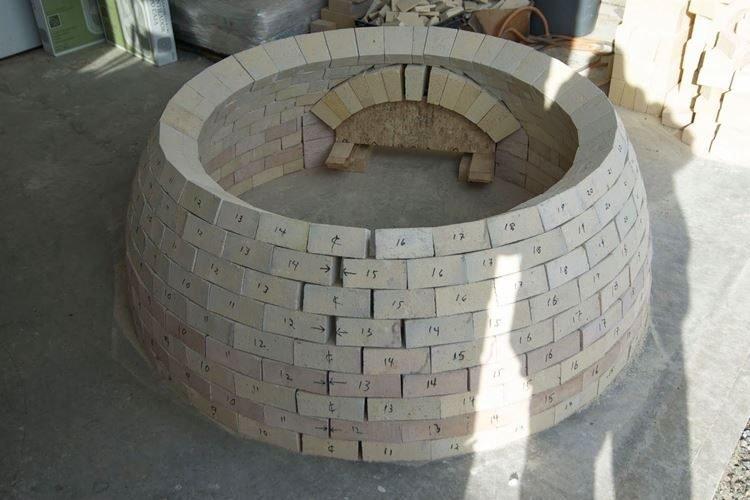
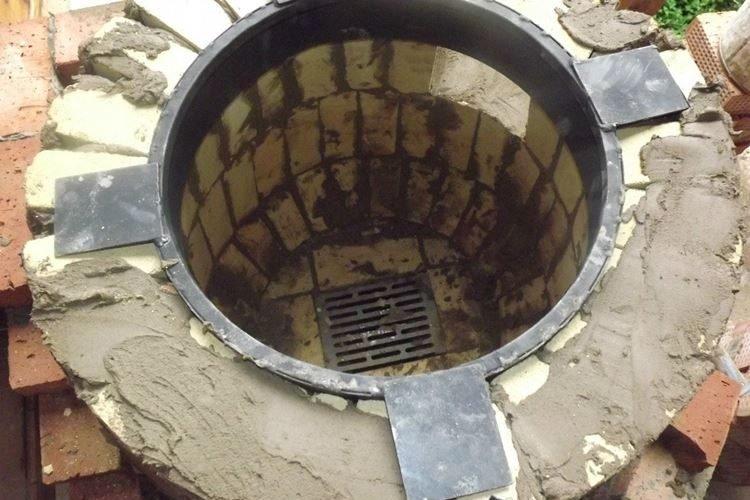
Tandoor coating
When the brickwork is dry, it must be plastered with a special oven mixture. Apply it in a layer of 1 cm or more and round the top edge to resemble a roller. While the plaster is drying, cover the structure with foil to protect it from moisture and sun. Then cover the tandoor with fireproof acrylic paint.
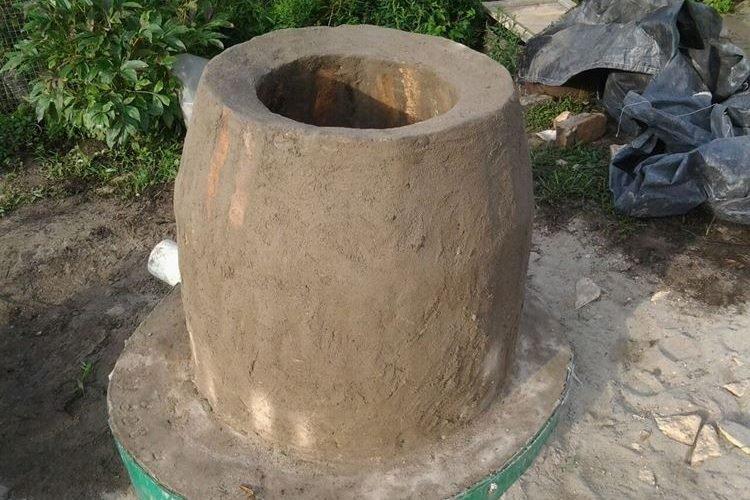
How to make a tandoor from a barrel
A very simple do-it-yourself tandoor can be made from a 200-liter metal barrel and brick. You will also need sheet metal, oven grates, old tire cover and door hinges. And little things like wire, fasteners and tools.
For the foundation, half-dig the tire into the ground and fill it with concrete. While it dries, cut a small rectangle in the barrel, make a sheet metal frame and screw to it. When you fill the barrel with bricks, leave a way to this hole for blowing and cleaning.
Lay out the second layer of the bottom and place the metal grate instead of the brick over the hole. Fill the barrel up to the top with bricks and fill all the voids with mortar. Make a sheet metal lid, screw the door onto the frame, and place the barrel on the foundation.
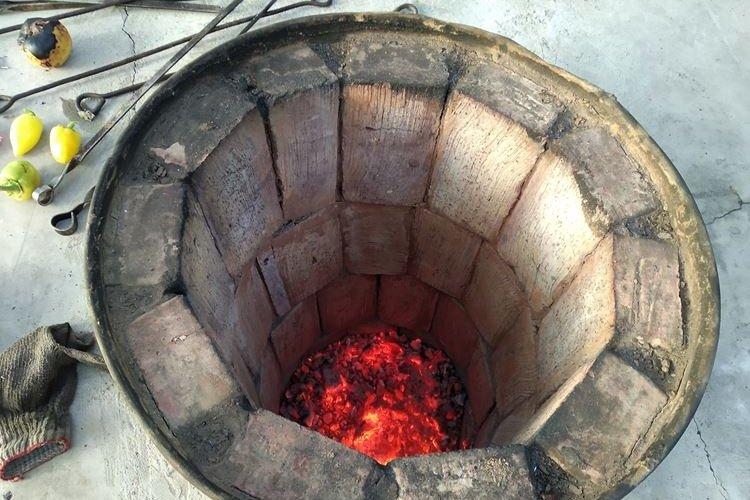
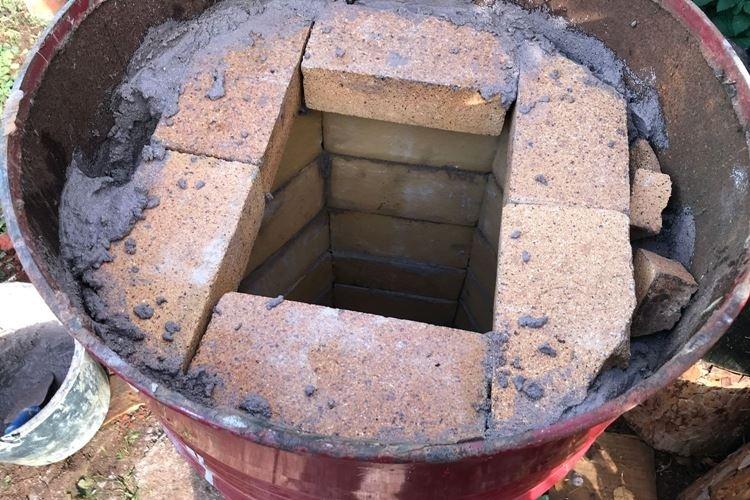
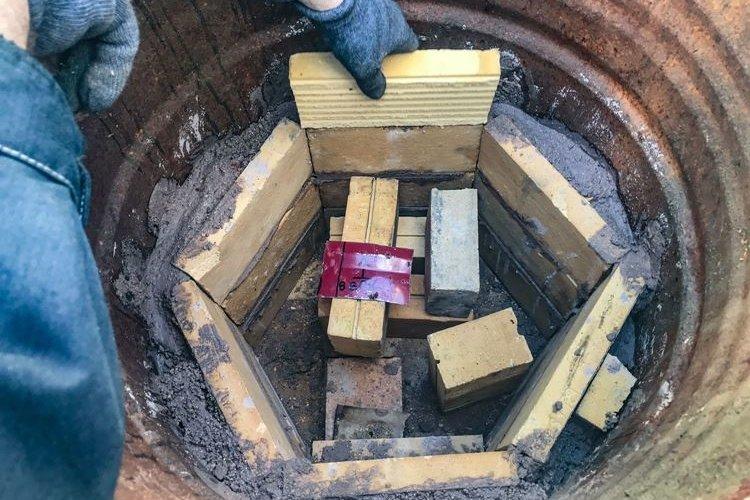
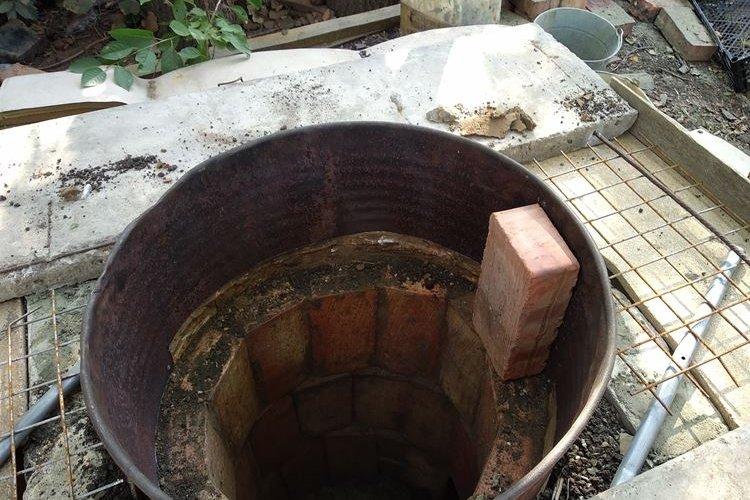
DIY clay tandoor
Choose heat resistant yellow or gray kiln clay for the highest temperature possible. On a production scale, reinforcing components are added to the clay, strips are rolled out and a tandoor is already sculpted from them. But such a technique cannot be repeated with your own hands without experience and the necessary materials.
At home, cut thick cardboard into strips 30 cm wide and wrap around the diameter of the hearth. Fill the container with sand inside, and wrap the outside with a special mortar tape. Then gradually add clay to equalize the width and increase the height.
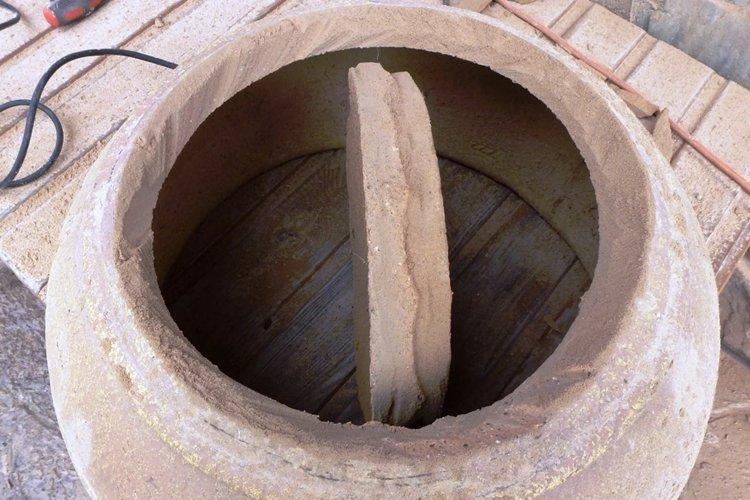
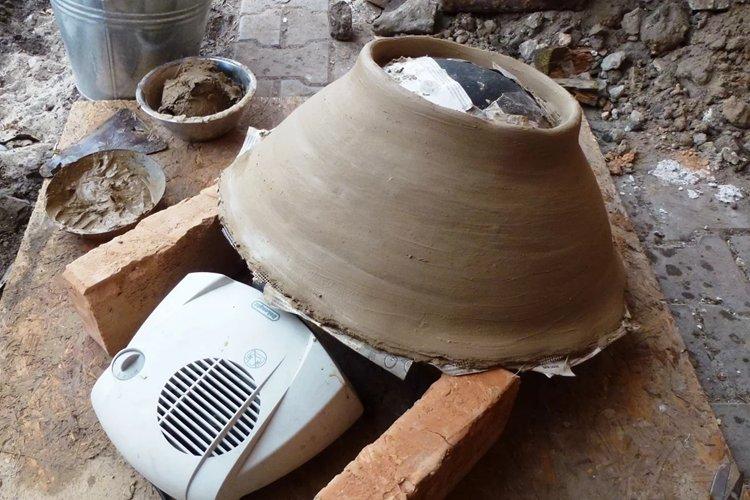
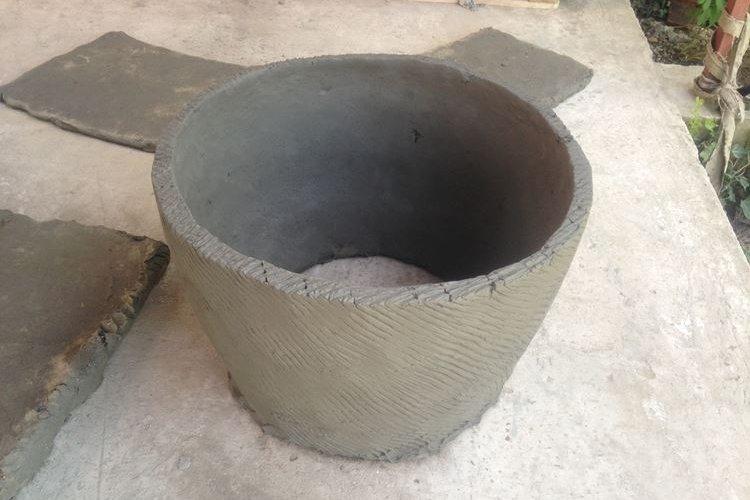
Yamny tandoor do it yourself
To make a pit tandoor, dig a pit of the required size, adding 20-30 cm along the perimeter. Fill the bottom with a 15 cm layer of rubble and tamp it well. Saturate it with hot mastic or apply heat-resistant waterproofing on top.
It is recommended to lay the masonry around the perimeter in two layers, and lay insulating material between them. Do not forget to lead the chimney pipe to the side. You can coat the walls of the tandoor with special fireclay clay or leave it bricked.
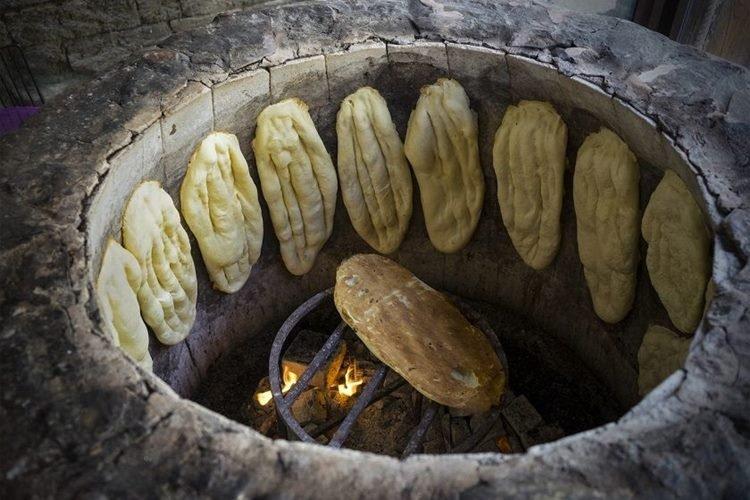
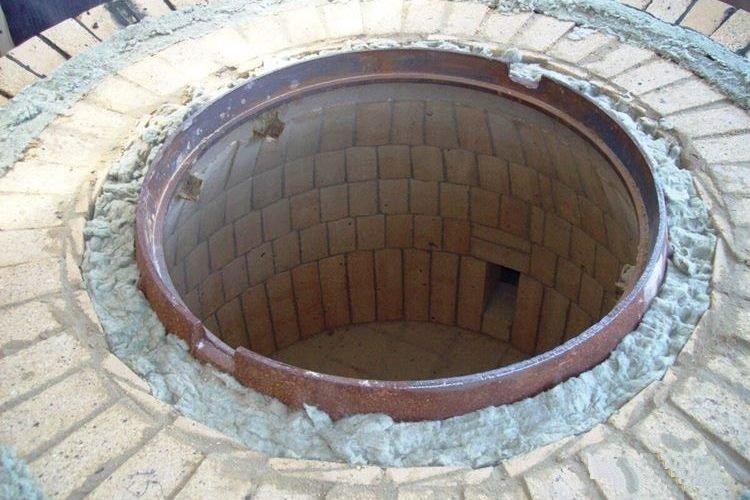
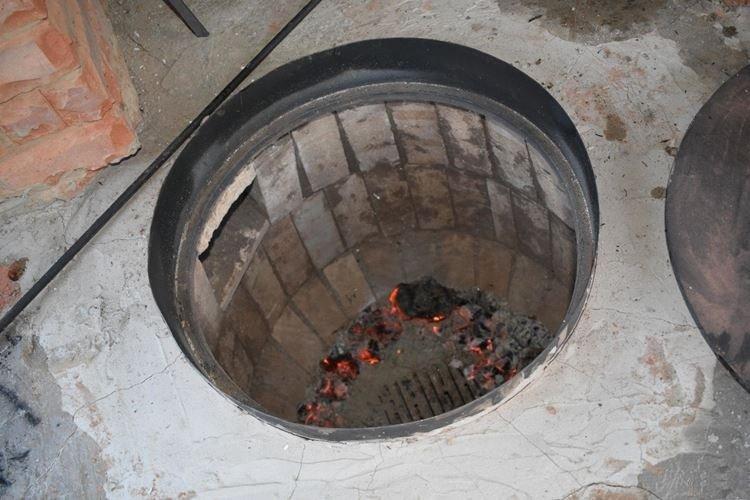
How to cook in a tandoor?
First, put coal in the tandoor and wait until it completely burns out.For the convenience of loading products, special skewers, hooks, grates and other useful accessories are sold. In a properly made tandoor, one tab of fuel is enough for 5-6 hours of cooking.
Traditional oriental cakes are glued directly to the clay walls. To do this, they need to be well washed from the old carbon deposit in advance and wait until the new ash burns out clean. In order for the dough to stick better to the surface, first moisten it well with water.
